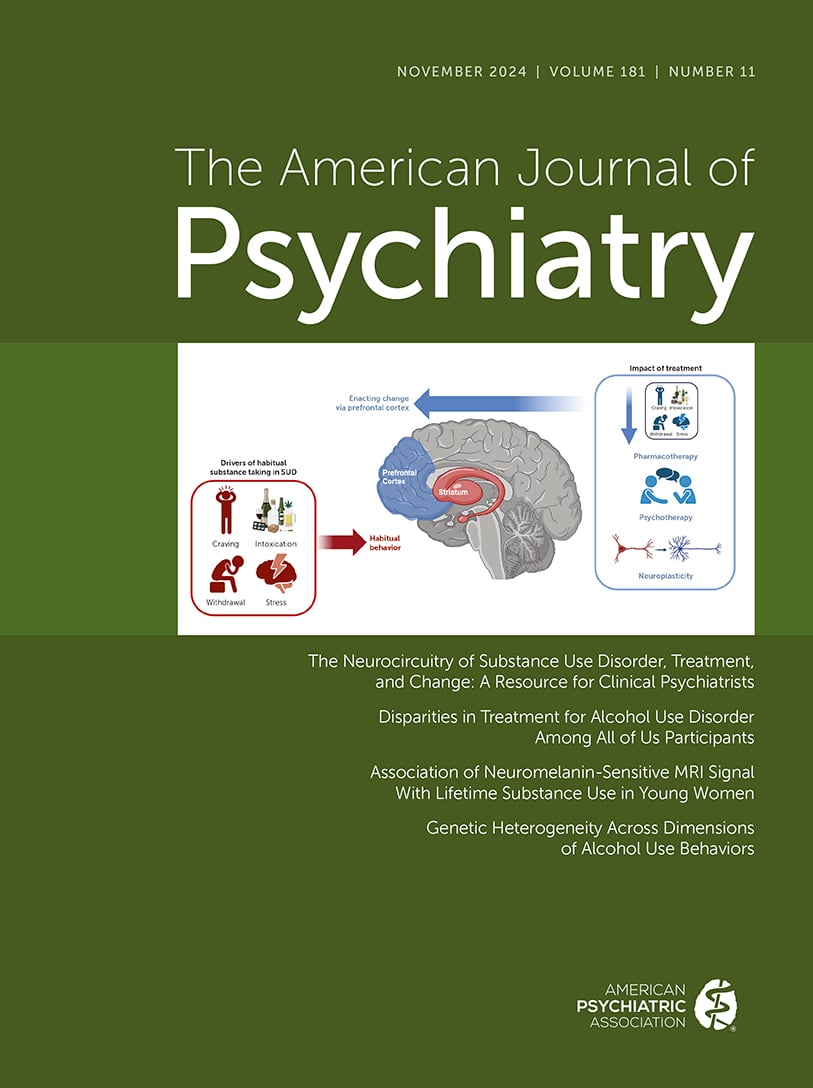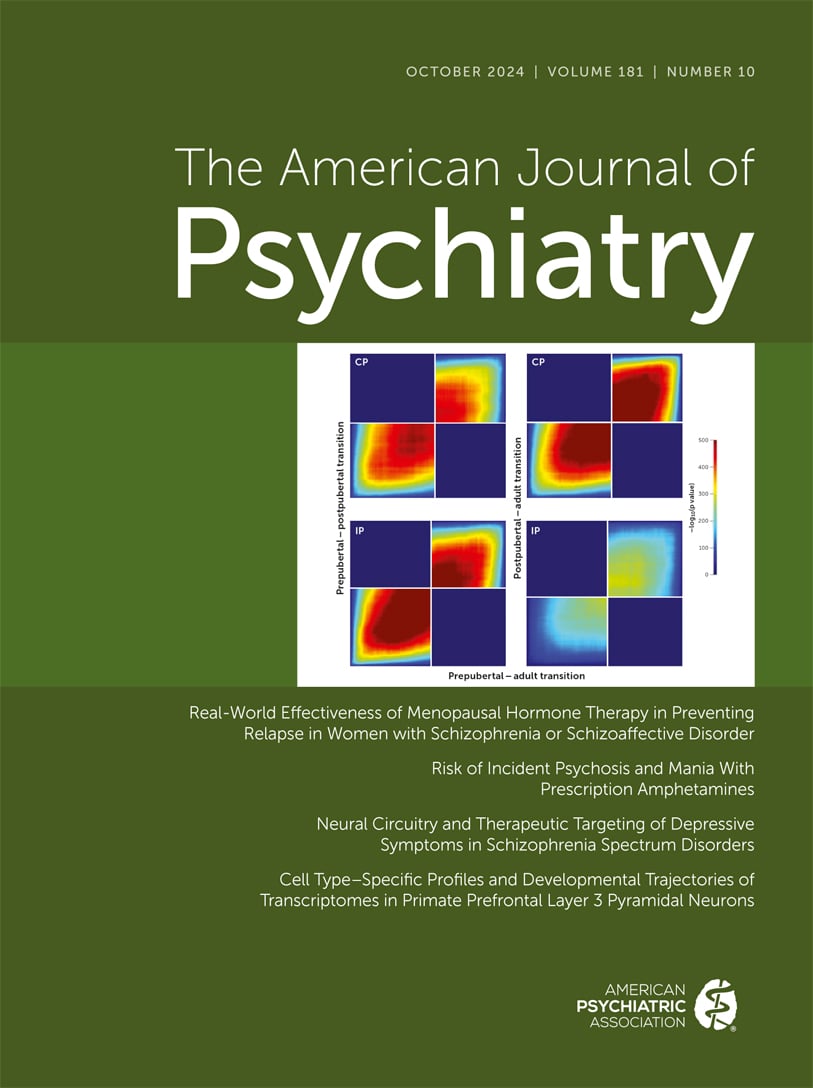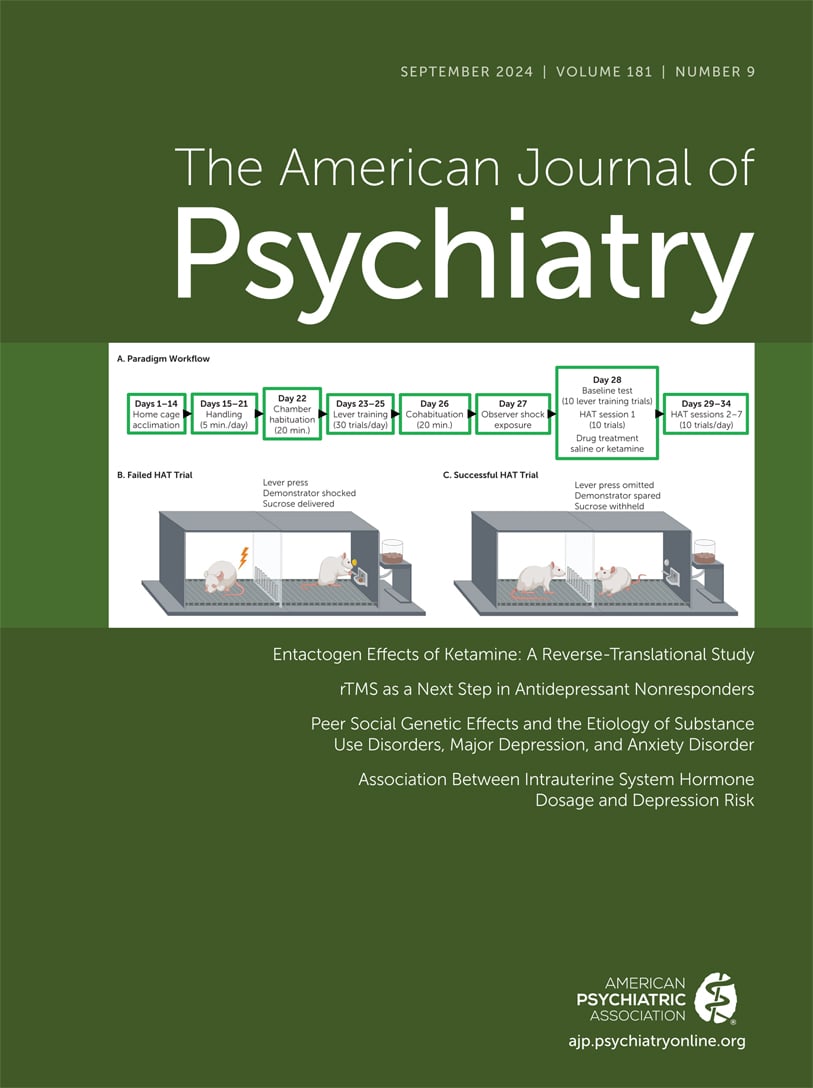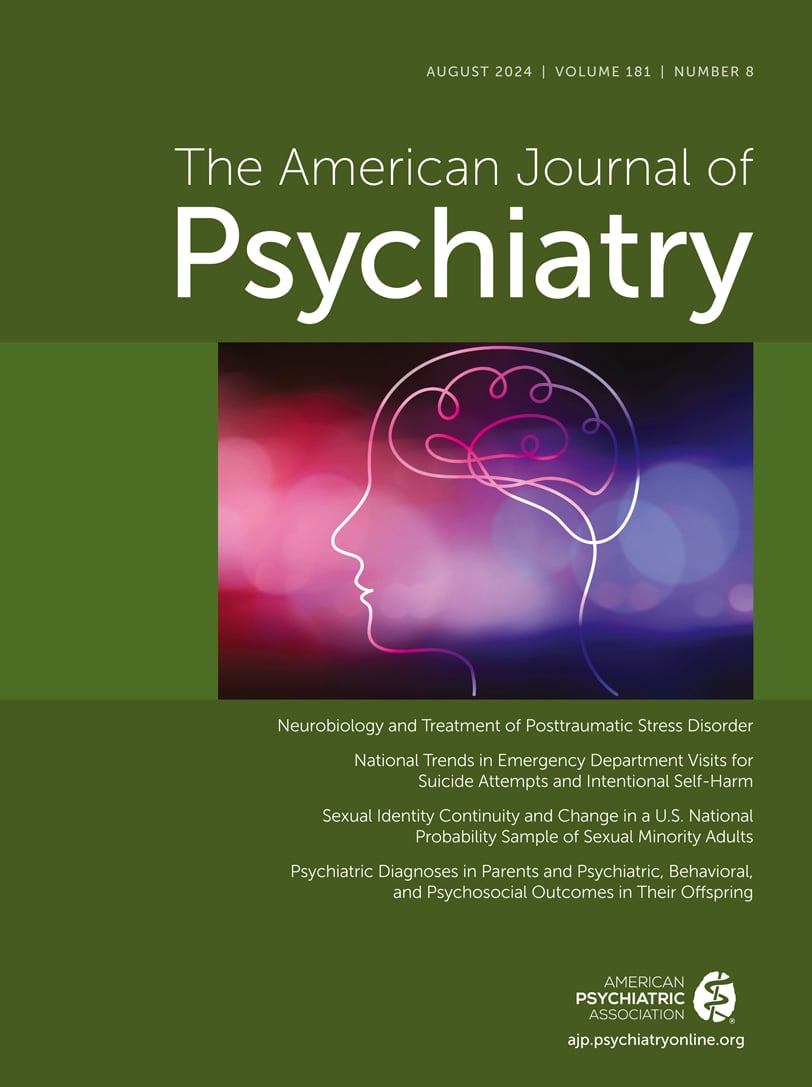American Journal of Psychiatry
- Volume 122
- Number 3
- September 1965
Article
Publication date: 01 September 1965
Pages267–271The poor patient with his special needs requires special psychiatric treatment. In the past, clinics have not considered this fact and have rejected them too often as unsuitable or unmotivated. We have learned some treatment techniques in listening to our ...
https://doi.org/10.1176/ajp.122.3.267Publication date: 01 September 1965
Pages285–289We have discussed a teaching program in public health psychiatry from the point of view of a number of relevant issues in community practice and research. We have particularly stressed problems and issues in each of three areas, i.e., unmet psychiatric ...
https://doi.org/10.1176/ajp.122.3.285Publication date: 01 September 1965
Pages295–299A program is described for the rapid detection and control of hypomanic episodes. This program has four salient features. 1. A systematic search for a pathognomonic tell-tale sign in each patient which heralds the onset of an attack. 2. The education of ...
https://doi.org/10.1176/ajp.122.3.295Publication date: 01 September 1965
Pages300–305The previous reported finding of elevated PBI in patients receiving perphenazine has been once more confirmed. A marked difference in the finding between pre- and post-1962 has been found. Trace amounts of iodine in perphenazine have been demonstrated and ...
https://doi.org/10.1176/ajp.122.3.300Publication date: 01 September 1965
Pages306–312The psychogenic fraction of narcolepsy is centered about unacceptable impulses and defenses they provoke. In cataplexy episodes, sexual and aggressive actions and fantasies are blocked on a neuromuscular level. A sleep attack is far more complicated and ...
https://doi.org/10.1176/ajp.122.3.306Publication date: 01 September 1965
Pages316–319A measure of work and work-like activity during hospitalization of 211 male schizophrenic veterans was compared with their posthospital employment experience over a 6-month follow-up period. Most of the patients (53%) had participated in worthwhile, ...
https://doi.org/10.1176/ajp.122.3.316Publication date: 01 September 1965
Pages329–331For this severely impaired population of 37 patients suffering from chronic brain syndrome associated with cerebral atherosclerosis, treatment with 1.25 mg./day of conjugated equine estrogens over a period of about one year resulted in no measurable ...
https://doi.org/10.1176/ajp.122.3.329Past Issues
View Issues Archive
Vol. 181 | No. 11

Vol. 181 | No. 10

Vol. 181 | No. 9
